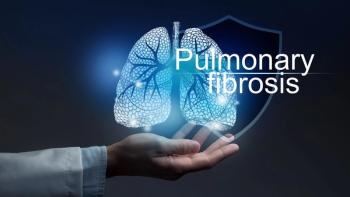
- Pharmaceutical Technology-06-02-2019
- Volume 43
- Issue 6
Good Laboratory Practices: Getting on the Same Page
Quality and compliance depend on the right approaches to training, standard operating procedures, and validation. More tools are available to help ensure success.
Like many crucial regulations, good laboratory practices (GLPs) were enacted in 1979 after FDA observers found serious problems in documentation, training, and data integrity at a number of research labs (1). Global GLPs establish guidelines for standard operating procedures (SOPs), which explain how to carry out specific tests and how to use and maintain laboratory equipment. GLPs also set requirements for equipment calibration and maintenance, data collection, and investigation and documentation of out-of-specification (OOS) findings.
Decades later, global regulators still find deficiencies in the way that some companies’ preclinical and quality-control labs approach data integrity, training, and SOPs. Incorrect approaches to investigating OOS conditions are also frequently found in regulatory citations, for GLPs as well as for good manufacturing practices (GMPs).
Lack of reproducibility
Another major problem that can be traced to inadequate compliance with GLPs is lack of reproducibility (i.e., a situation in which other laboratories cannot replicate the results published in original research conducted in an innovator laboratory). In 2015, the Global Biological Standards Institute (GBSI) found that 50% of published preclinical research could not be reproduced, a problem that continues to delay the development of new products and wastes $28 billion/year in the United States alone (2).
In some cases, researchers found, equipment was not being used efficiently based on vendor guidelines; in others, biological reagents and reference materials, cell lines, antibodies, and reagents were not properly validated (3). Also faulted were incomplete study data and lab protocols.
Improving data access
Industry executives have pointed to cross-functional data access and utilization as a major challenge for the industry. This challenge affects the lab as well as the plant. IDC Health Insights surveyed 126 biopharmaceutical and pharmaceutical executives in the United Kingdom and the US, and found a significant gap between their need and their strategies for harnessing data (4). More than 98% of respondents said that cross-functional data access was important or very important to their business strategies, and 94% described the ability to apply advanced analytics and/or artificial intelligence the same way. However, 51% of those surveyed said that they did not have a clear strategy in place to help them reach either of those goals.
A number of digital tools are available to help lab scientists capture and use more data, to improve laboratory efficiency and reproducibility. These tools allow data to be extracted from various software systems, and some of them feature use of machine language and elements of artificial intelligence. One example is LabStep, an interactive digital platform designed to help scientists get around some of the deficiencies of electronic lab notebooks (ELNs). The platform allows users to refer directly to the most relevant protocols, SOPs, and other important data (5) as they work.
LabTwin is also active in this area, and will introduce a new voice-activated lab assistant at BIO 2019 in June, in Philadelphia. Combining artificial intelligence, voice recognition, and machine language, the hands-free device allows researchers to document steps they have taken and to save explicit details that cannot currently be saved in ELNs (6). Labfolder (7) is yet another platform that has been designed to enable more laboratory data to be saved, accessed, and used throughout any organization.
Ultimately, compliance with GLPs depends on following best practices. Stuart Jones, regulatory quality assurance professional in good laboratory practice (RQAP-GLP) and director of quality assurance at PPD Laboratories’ Bioanalytical Laboratory shared recommendations with Pharmaceutical Technology.
Best practices
PharmTech: What GLP problems do you frequently encounter at pharma and biopharma companies, and how can they be prevented?
Jones: Because we work in such a regulated environment, a seemingly minor matter can have a significant impact on quality. As such, training is an important best practice, from the time of hire, to retraining when a deviation occurs.
Annual refresher training as well as specific group remedial training should also be provided whenever needed. Meanwhile, the use of automated or electronic systems, such as laboratory e-notebooks, can be especially beneficial in maintaining the most accurate documentation.
Training is a challenge
PharmTech: How do you recommend that biopharmaceutical companies tackle training?
Jones: Initial training, especially with newer employees, can be done through reading, lecture, and/or some type of knowledge or learning assessment, but the best results occur when that theoretical work is followed up and supplemented by hands-on training. This is accomplished most effectively by teaming new employees with experienced staffers, using training goals established within a predetermined curriculum.
Some measure of refresher training should be required on at least an annual basis and it should be consistent across all experience levels. Metrics generated around unplanned protocol and SOP deviations, as well as human error, should be used as indicators in determining the course and effectiveness of current training plans.
Destroying silos
PharmTech: What best practices do you recommend to make data less siloed and more accessible to those who may need it (on cross functional teams?)
Jones: One of the best ways to establish a more cross-functional approach and enhance data accessibility is to use one system across all sites. If one across-the-board system is not possible, then the multiple systems must be able to work in tandem. Data portals and SharePoint sites also can be utilized to securely share information on a real-time basis.
PharmTech: Reproducibility is a major problem for biopharmaceutical preclinical research. Is this problem also seen in pharma quality control labs? What best practices do you recommend regarding the validation of materials and methods?
Jones: We have found that, after research and development of the method by our R&D scientists, it is important to involve the sample analysis team in performing some, if not all, of the validation experiments, with technical assistance provided, as needed, by the R&D scientists who developed the method. This approach allows for a shared collaboration between the research and production teams, and continues into sample analysis to ensure reproducible results from the developed and validated method.
Best practices include following the proper bioanalytical method validation guidances; the bridging of critical reagents; analyst method qualification and scientific expertise/knowledge of the assay; as well as the use of incurred sample reproducibility testing as one of the ways that the bioanalytical lab can prove that the method can be reproduced.
References
1. H.Danan, Pharmaceutical Technology 15(6), (2003).
2. L. Freedman et al, BioPharm International 28(10) pp 14-21 (2015).
3. M. Williams, Current Protocols 81(1) (2018).
4. Accenture, “
5. Lab Twin, Press Release, “Voice Activated Laboratory Assistant to Launch at BIO 2019,” May 21, 2019.
6. J. Gould, “
7. S. Bungers, “
Article Details
Pharmaceutical Technology
Vol. 43, No. 6
June 2019
Pages: 47–48
Citation
When referring to this article, please cite it as A. Shanley, “Good Laboratory Practices: Getting on the Same Page,” Pharmaceutical Technology 43 (6) 2019.
Articles in this issue
over 6 years ago
Hovione Technology Develops Blister-Based Inhalerover 6 years ago
Enabling Technologies Advance Poorly Soluble Highly Potent APIsover 6 years ago
Pharma Facilities Still Have a Lot to Learnover 6 years ago
Filling the Early Intermediate Security Gapover 6 years ago
As Easy as ABC?over 6 years ago
Regulating Cannabis-Based Medicines in Europeover 6 years ago
Supply Chain Risk and Security Maturity Evolutionover 6 years ago
On the Right Trackover 6 years ago
Looking Beyond the Solubility Horizonover 6 years ago
Enhancing Bioavailability with Hot-Melt ExtrusionNewsletter
Get the essential updates shaping the future of pharma manufacturing and compliance—subscribe today to Pharmaceutical Technology and never miss a breakthrough.





